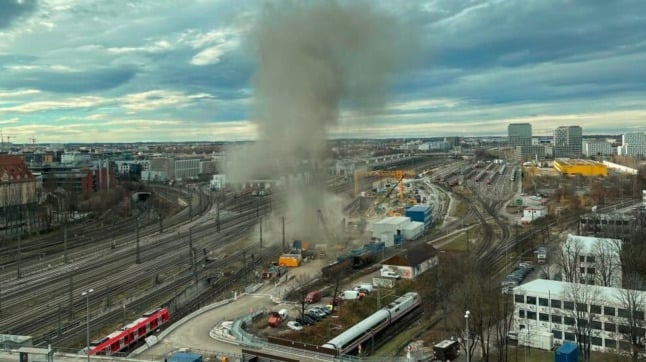"Germany, generally speaking, has never really addressed the issue of works of art seized by the Nazis. It should have done that much earlier, soon after the war," Nana Dix told AFP in a telephone interview from her home in Munich.
"A discovery like this has never happened and now that it has, I find it scandalous," added Dix, an artist in her own right.
Her grandfather was persecuted by the Nazis, who branded his moody, often grotesque depictions of the impact of war on German society as "degenerate".
The elder Dix's painting was heavily influenced by the horrors he witnessed in the trenches of World War I, an experience he described as "hideous" and a view that would put him at odds with the Nazis' glorification of the German military.
Nana Dix said the German authorities now had an obligation to publish all of the more than 1,400 paintings, sketches and prints by the likes of Matisse, Picasso and Chagall found stashed at the home of Cornelius Gurlitt, the son of powerful art dealer Hildebrand Gurlitt.
Despite his Jewish roots, the Nazis chose him for an exclusive group tasked with selling "degenerate" works confiscated from museums or masterpieces stolen or extorted from Jews in exchange for hard currency.
Many of the artworks that were not sold were thought destroyed or lost after the war, and only resurfaced at the home of Cornelius Gurlitt during a customs police search of his flat in February 2012.
German authorities kept quiet about the case, loath to touch off a deluge of claims, until a magazine this month broke the story.
Nana Dix said posting titles and pictures of all the works on a government provenance website, www.lostart.de, was essential in the name of transparency.
"The families of the rightful owners would have a look, and that would facilitate research because the case is truly a mystery," she said.
Among the Dix artworks that have come to light are a previously unknown self-portrait, two watercolours and a drawing.
"I was delighted when I heard about their discovery," she said.
"I was of course pleased to know that they hadn't been destroyed or burned.
At the same time, I had a strange feeling, knowing that for years, these works were hidden in the home of Cornelius Gurlitt who was living a lie. This man cannot have led a very happy life."
All the odder because Nana Dix lives less than a kilometre (mile) from Gurlitt's garbage-strewn apartment where the canvases were hoarded.
"It's eerie to think that I often passed by with my children," she said.
Dix, who was seven when her grandfather died in July 1969, said she had fond memories of him.
"We were allowed to come into his studio, to paint there and do crafts. He also played with us," she said.
"Of course, he was a cranky and grumpy man, but with us, the children, he was always very nice."
She said she regrets not being older when he died.
"I would have liked to talk about the Third Reich with him. He was a broken man," she said.
"My parents were the ones who told me that he had been banned from painting and dismissed from Dresden Academy in 1933," when the Nazis came to power.
When the Nazis mounted an infamous 1937 exhibition of "degenerate art", mocking works they said violated the ideals of the Third Reich, paintings by Dix entitled "War Cripples" and "The Trench" had pride of place.
The two works were later burned.
Threatened with prison and deportation, Dix fled to a lakeside in southern Germany but was conscripted for service in World War II and taken prisoner by the French.
He was released in 1946 and resumed his artistic career in Dresden, maintaining a focus in his work on the horrors of war.



 Please whitelist us to continue reading.
Please whitelist us to continue reading.
Member comments